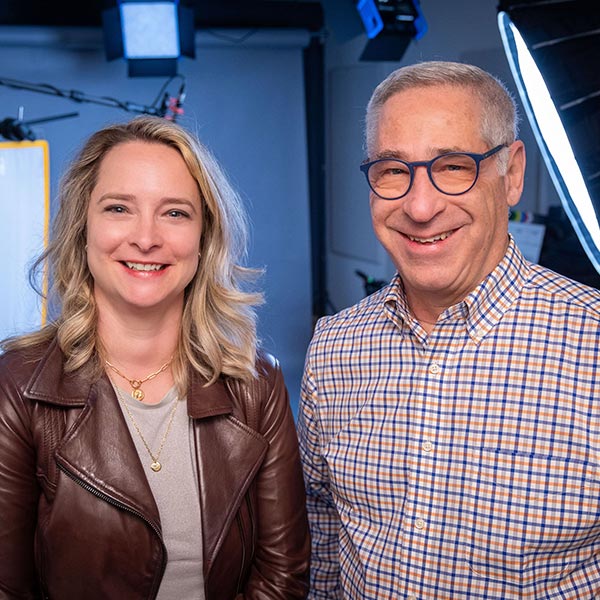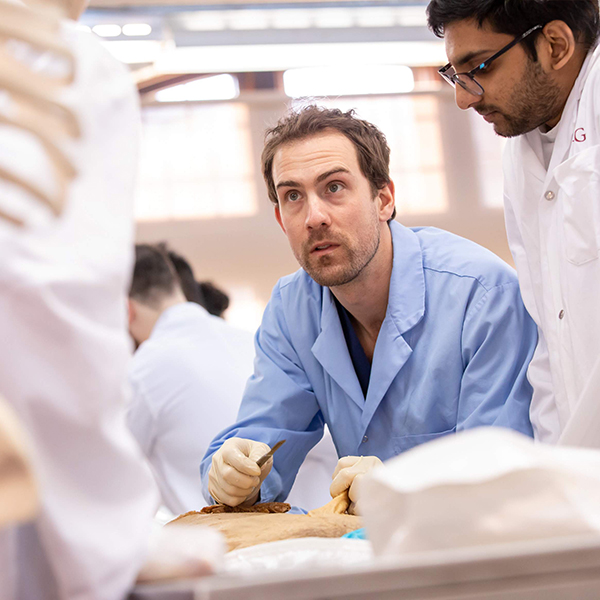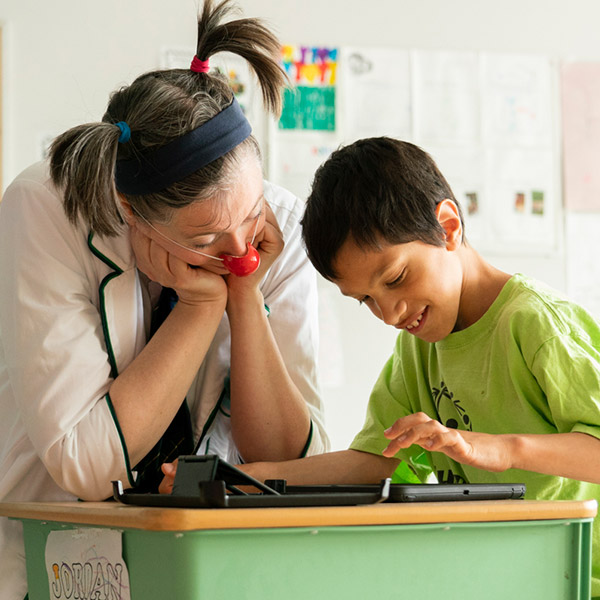Most forms of plastic eventually break down into microplastics: microscopic particles that never truly disintegrate and become permanently embedded in the environment, forming an invisible layer of pollution.
In her disturbing new documentary Plastic People: The Hidden Crisis of Microplastics, science journalist Ziya Tong, MA’99, looks at other places where we can find those microplastics – inside our own bodies.
The film examines our global addiction to plastic and raises questions about the impact of microplastics on human health.
As the film’s co-director and globetrotting interviewer, Tong takes viewers on an unnerving journey that documents how these omnipresent, tiny pollutants are invading our bodies.
She interviews leading scientists from around the world – Italy, Turkey, The Netherlands, the U.K., the U.S., Canada, the Philippines, and Rwanda – who are now detecting these microscopic particles in our hearts, arteries, blood, guts, brains, and even in the breast milk and placentas of new mothers.
“I got involved with this film to make the hidden connection between plastic pollution and human health visible,” says Tong, who co-hosted the Discovery Channel’s Daily Planet for 10 years. She is also the author of The Reality Bubble: Blind Spots, Hidden Truths, and The Dangerous Illusions That Shape Our World, a book that won the 2020 Lane Anderson Award for best science writing in Canada.
“Humans are porous beings, and we’re made up of the world around us. When you track plastics in the world, you track plastics in the human body and need to ask probing questions about the potentially harmful, long-term effects on human health, which are still not fully known,” she says.
In the film, Tong takes a very personal approach to her investigation, undergoing tests to track the presence of microplastics in her own body. Scientists identify the presence of rayon, polyester, and polypropylene (used in salad bags and candy wrappers) fibres and fragments in her stool sample.
Startled at seeing “this stuff” that was inside her, Tong asks, “Does everyone have microplastics in them?” The scientists assure her that every single person on the planet is exposed to plastic and carries remnants in their body.
Visits to other specialists in other countries confirm that assessment.
A blood sample provided to researchers at the University of Hull in the U.K. finds 11 plastic fibres.
In a study of 20 healthy blood donors, the Hull toxicologists detected microplastics and toxic chemicals – including phthalates (endocrine disruptors), which can alter DNA – in each participant’s blood.
“The good news is it’s an important scientific discovery that raises awareness about the risks to brain health from microplastics. The bad news is Sedat found microplastics in the brain.”
Ziya Tong, co-director of Plastic People
Can microplastics cross the seemingly impenetrable blood-brain barrier in humans, an evolutionary barrier designed to protect the brain from any kind of substance in the blood that could potentially damage brain cells and disrupt brain function?
Five months into filming, Tong and writer/director Ben Addelman were able to connect with two Turkish scientists who test for microplastics in human brain tissue.
“There was a scientific race to see who could identify microplastics in the brain first,” Tong explains.
The film shows neurosurgeon Emrah Çeltikçi removing tumor tissue from the frontal lobe of a patient with brain cancer. He suggests that if microplastics are found in the brain and accumulate over time, this would likely lead to hazardous health consequences such as neuroinflammation, neurodegenerative diseases like Alzheimer’s, and brain cancer.
In an analysis of the extracted tissue samples, Celtikci’s collaborator Sedat Gündoğdu detects the presence of tiny particles from PVC (polyvinyl chloride) plastic in the patient’s tumor tissue.
“Nobody had been able to show this before,” says Tong. “The good news is it’s an important scientific discovery that raises awareness about the risks to brain health from microplastics. The bad news is Sedat found microplastics in the brain.”
Tong credits her time as a graduate student in communications at McGill with sharpening her ability to challenge accepted norms. “McGill taught me how to think critically, but not what to think.
“My passion for over 20 years as a science journalist and broadcaster has been to show people the invisible threats we face in compelling ways,” says Tong. “The Reality Bubble is an entire book about invisible threats and humanity’s biggest blind spots.”
Plastic People has been drawing attention on the film festival circuit. After its world premiere at the South by Southwest Festival in Austin, Texas, earlier this year, Variety film critic Owen Gleiberman described the movie as “one of those essential state-of-our-world documentaries.” Plastic People will be featured on CBC’s The Nature of Things in the fall.
One particular screening stands out for Tong. The film was presented in Ottawa during the fourth round of negotiations for the UN’s new Global Plastics Treaty in late April.
“We timed the release to coincide with the global plastics treaty negotiations and partnered with 16 NGOs to put pressure on public officials,” says Tong, who serves on the World Wildlife Fund International board.
While Plastic People highlights the potential dangers associated with microplastics, it also shares efforts by individuals, communities, countries and global organizations to develop practical solutions. These range from implementing bans on single-use plastics to sawdust filters that remove 99.9 per cent of microplastics from water.
Tong is already at work on her next projects, including two more documentaries she describes as “environmental horror films” and another book.
“If you have a public platform as a science broadcaster, filmmaker or author, you have a responsibility to speak up for other people who don’t have a voice. I try to use my voice to speak for the voiceless.”


